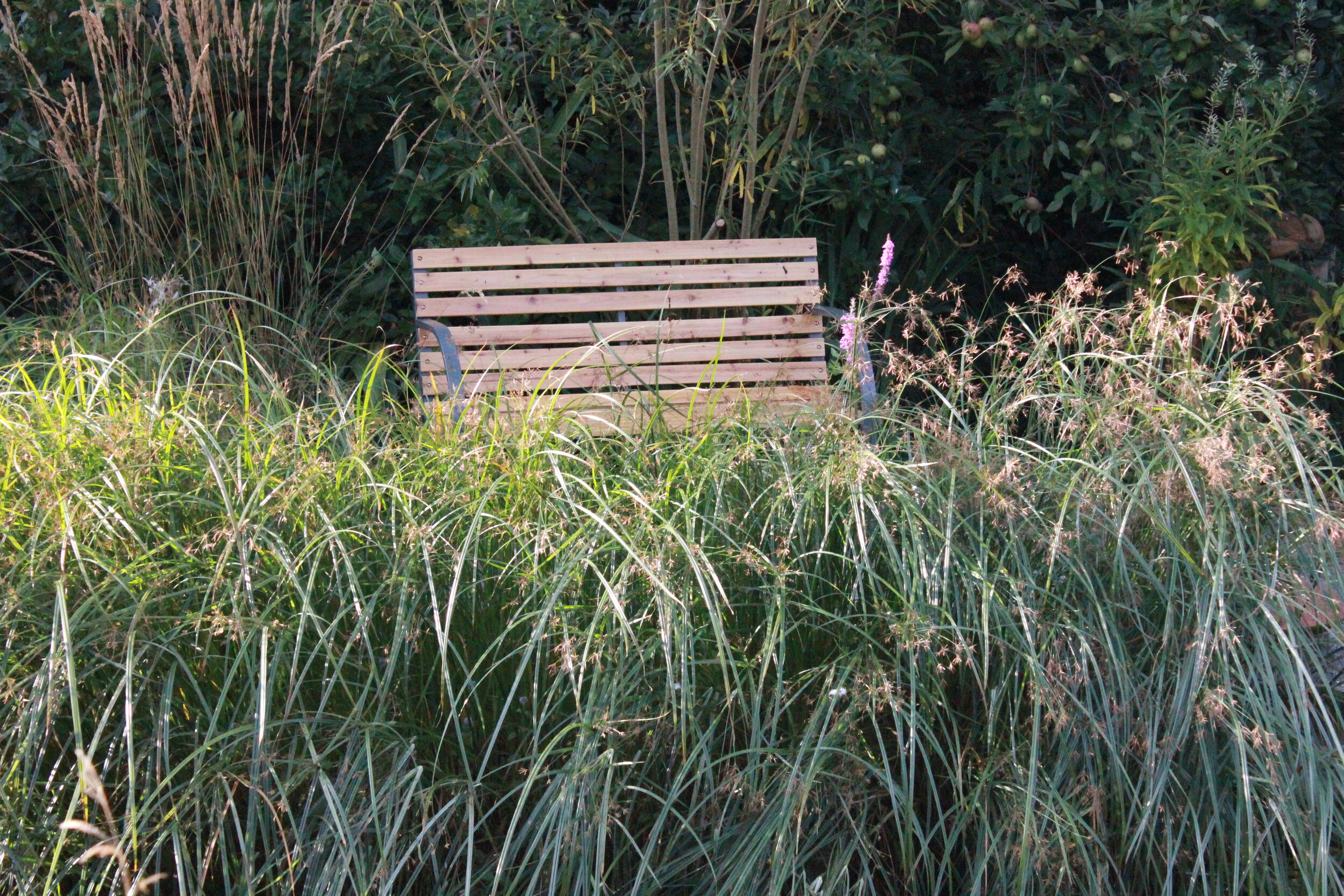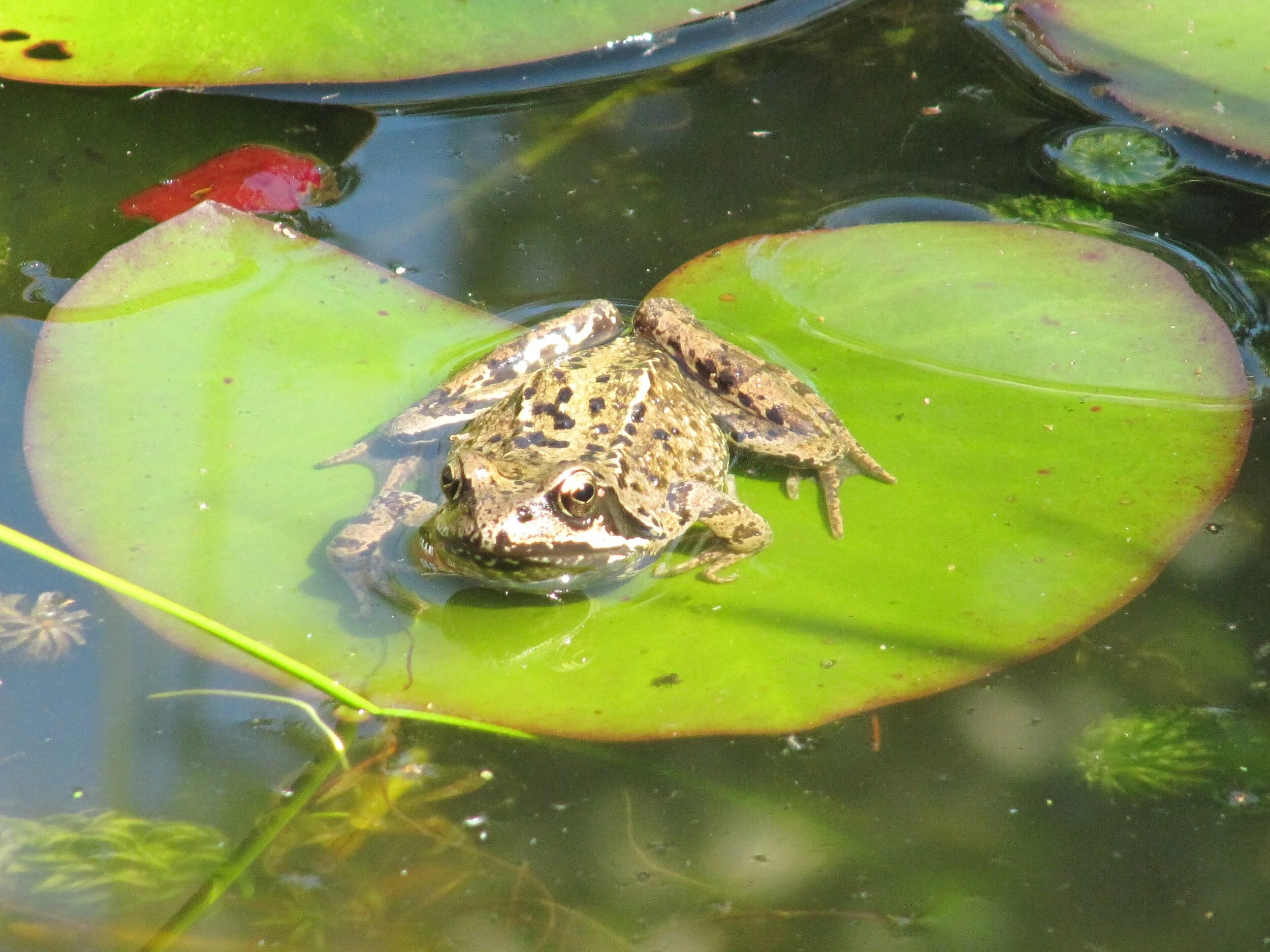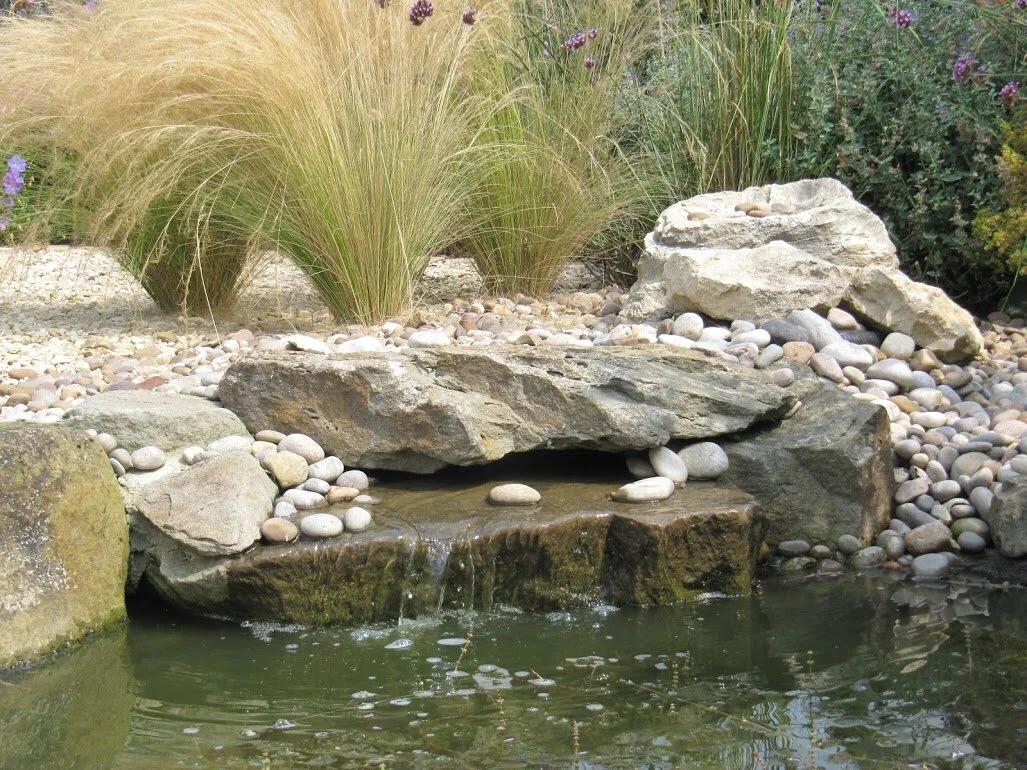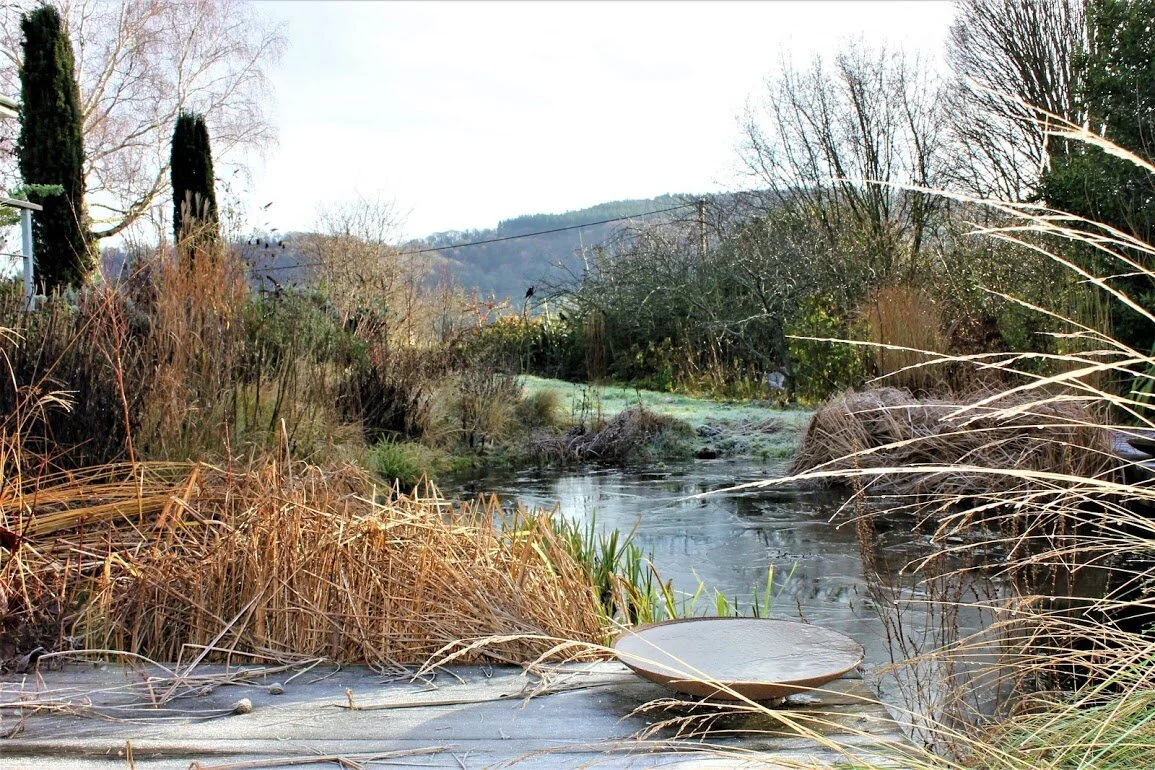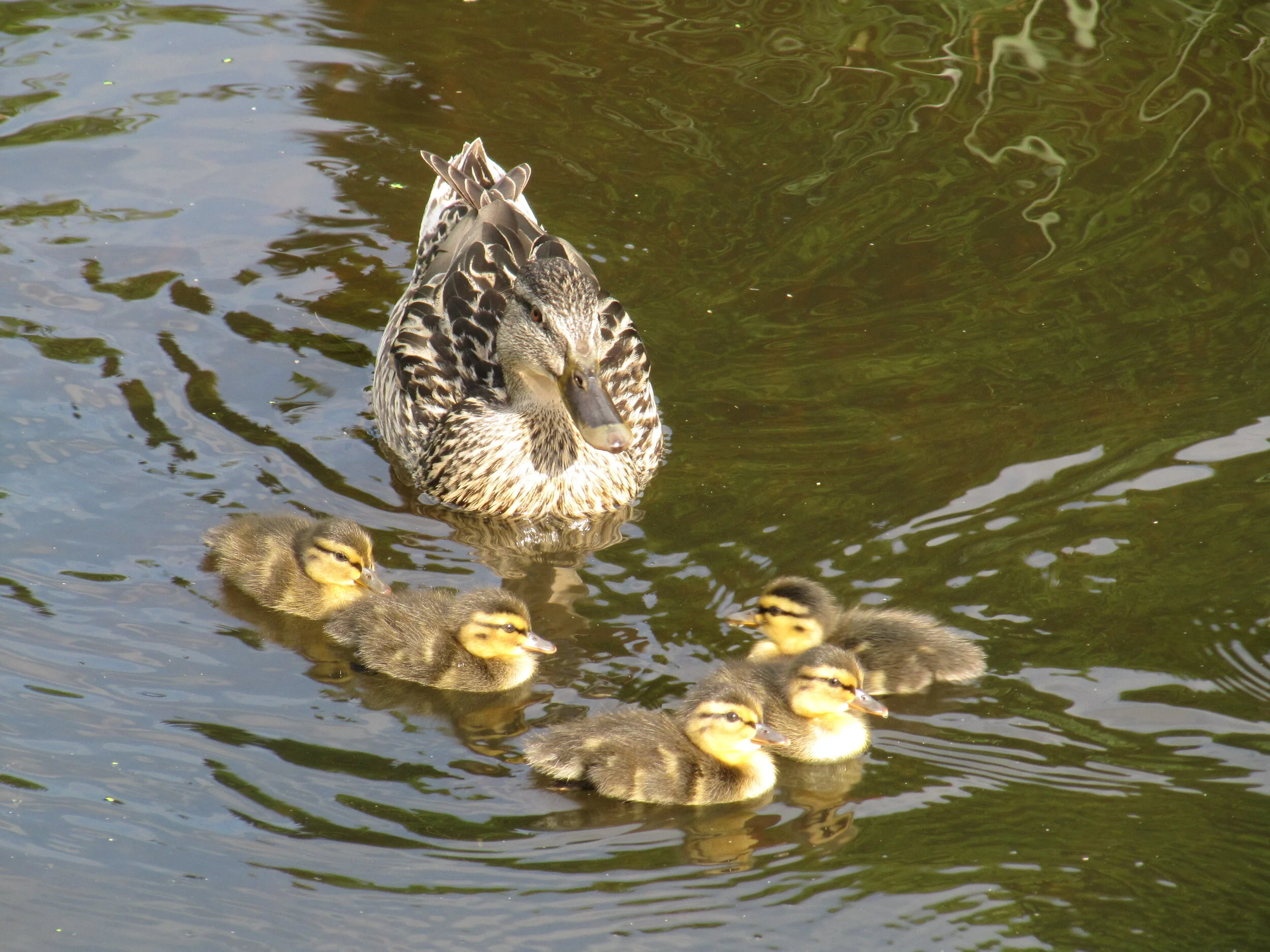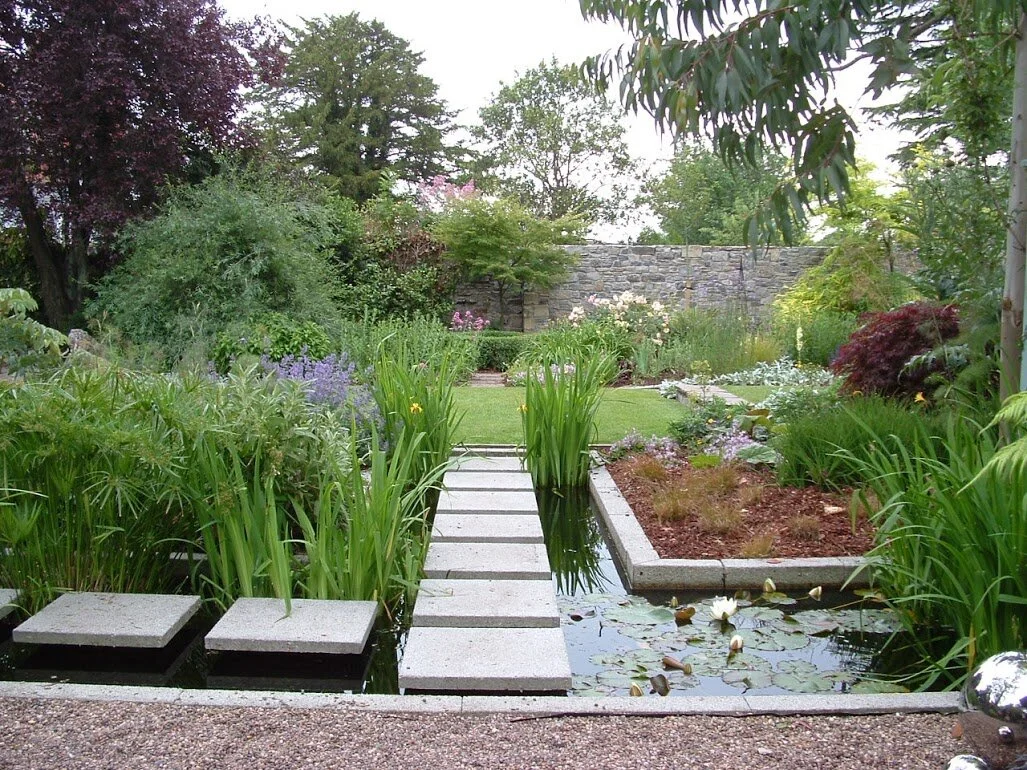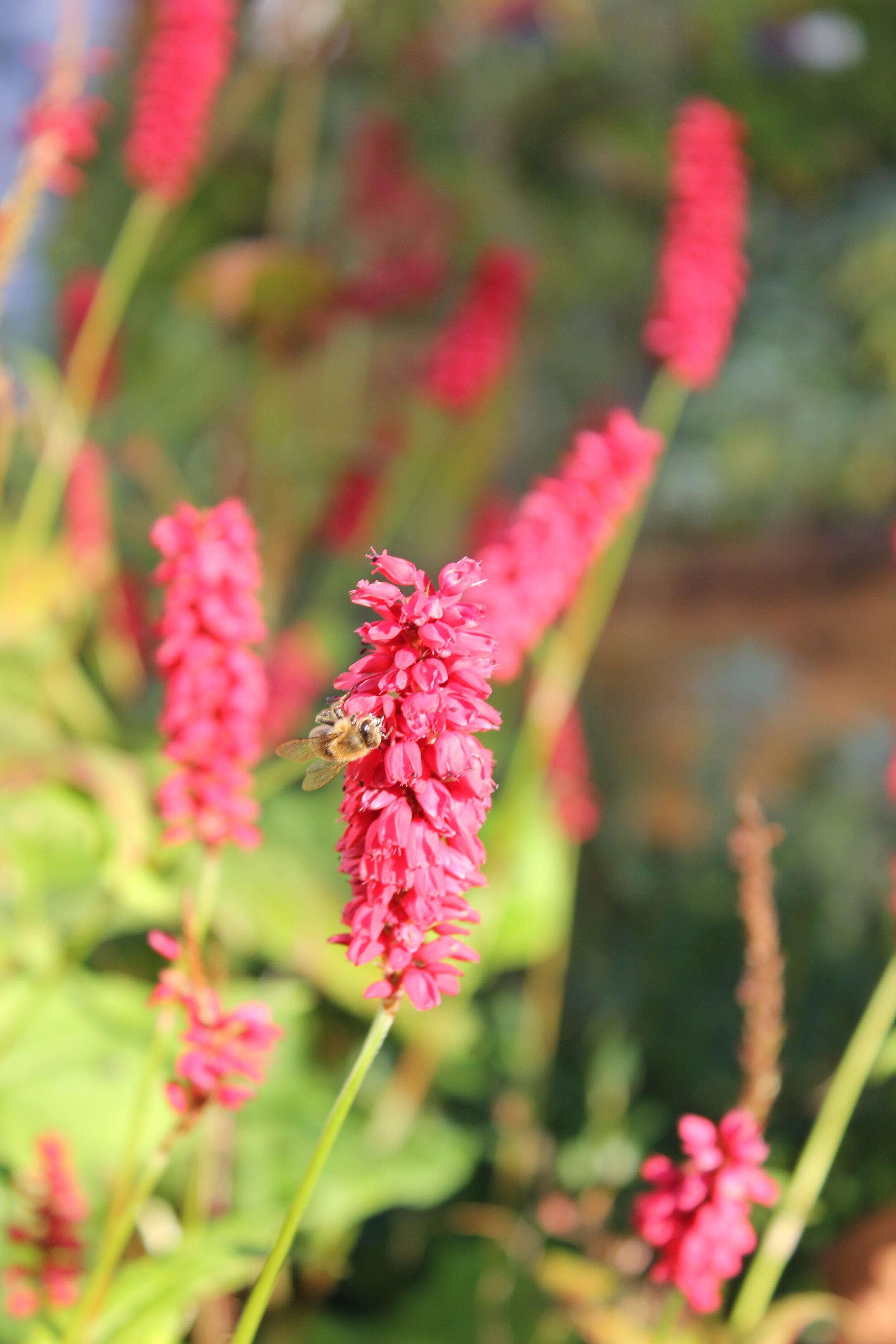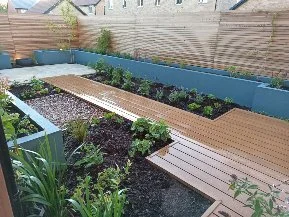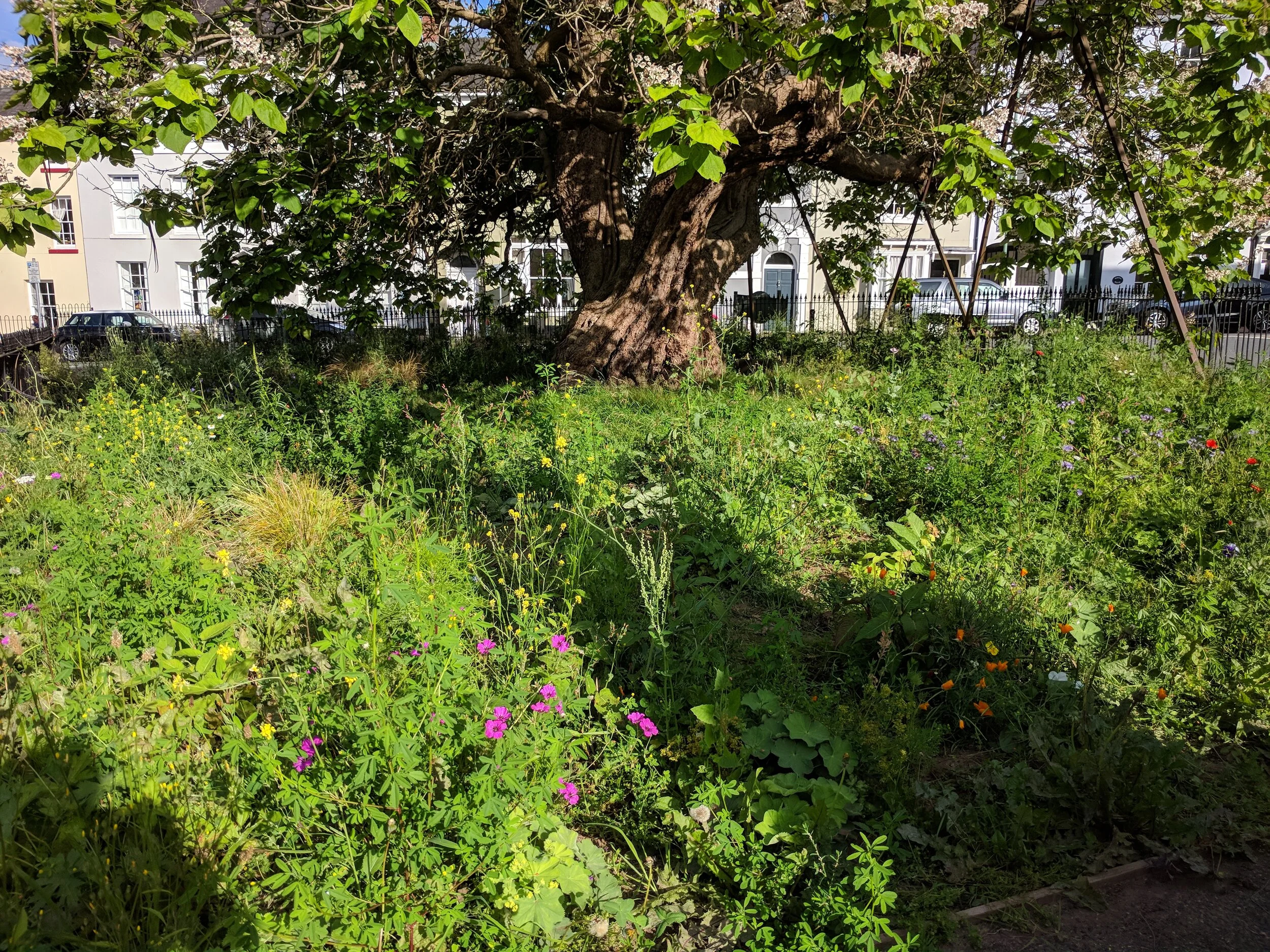Autumn has arrived in my garden bringing with it much needed rainfall, a glut of apples and a second spring with warm weather and a flush of new lush grass. To go with this unnerving reminder of our changing climate there are a few late flowers, some fiery foliage and fungi popping up from their hidden mycelium just about everywhere, in containers, among fallen foliage and unfortunately, also from the planks of the timber deck!
As expected, the cotoneasters, self sown and intentionally planted, are smothered in berries and on cue the birds are back in the garden. Yesterday brought the first of the autumn’s migrants, a redwing, it came down to the pond for a quick wash and brush up with a dunnock, a great tit and a coal tit. Song birds don’t seem to be fussy choosing bath time buddies, there’s safety in numbers no matter what their size.
Last weekend, I went on a fungus identification walk, something I’ve intended to do every autumn for years. Once we got our eyes in there seemed to be fungi fruiting bodies everywhere. One of the organisers told us that what we were seeing was only just scratching the surface, it’s almost overwhelming to realise just how much the life of our gardens, fields and woodlands are inextricably linked to their fungi, never mind the black mould creeping around inside our bathroom window! We might find the weather strange but for fungi it seems to be just fine.


















































































